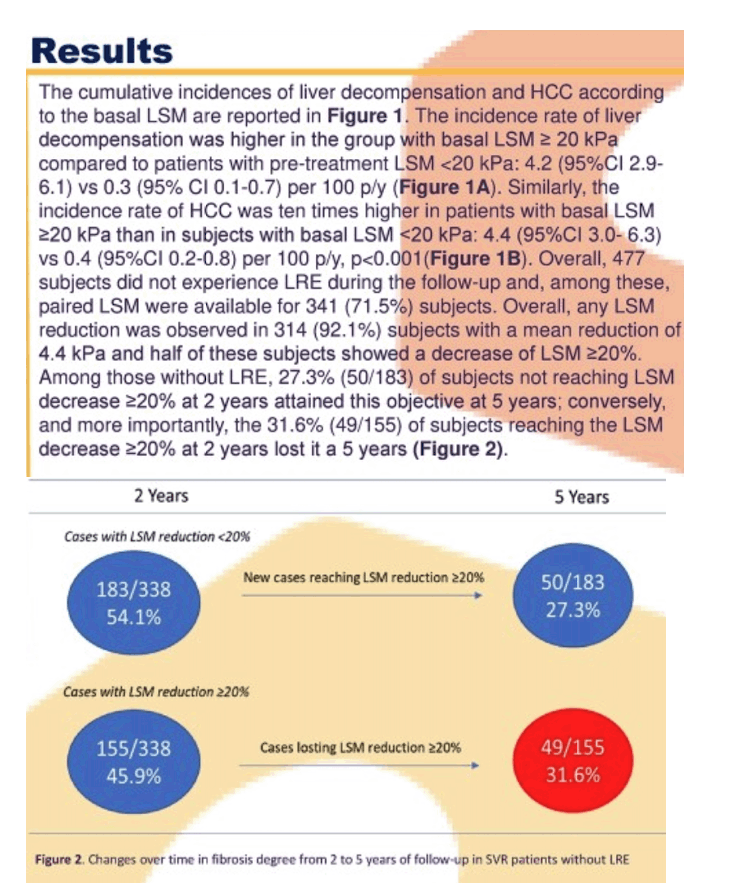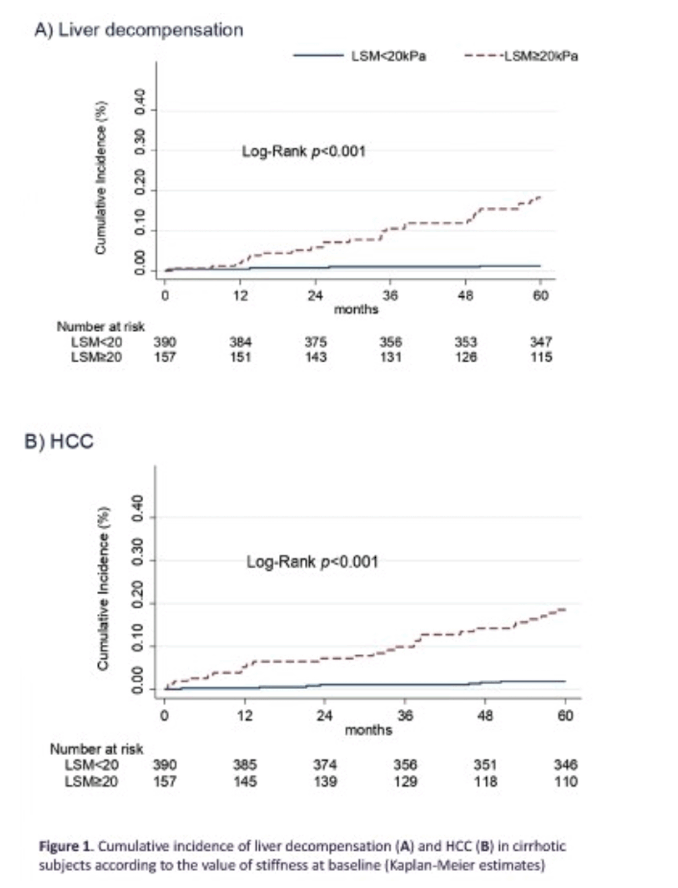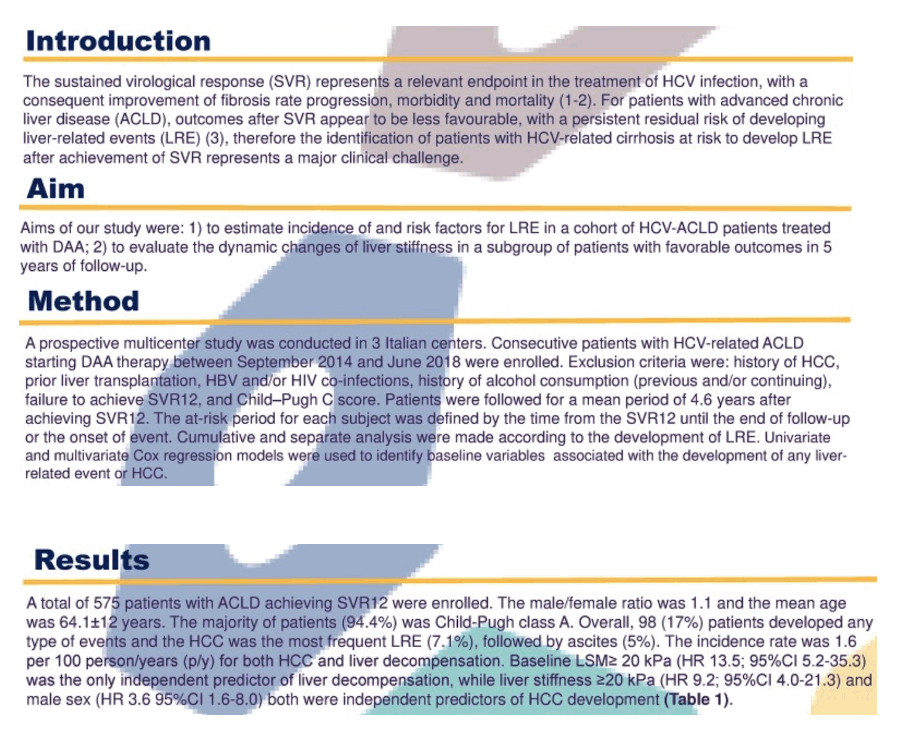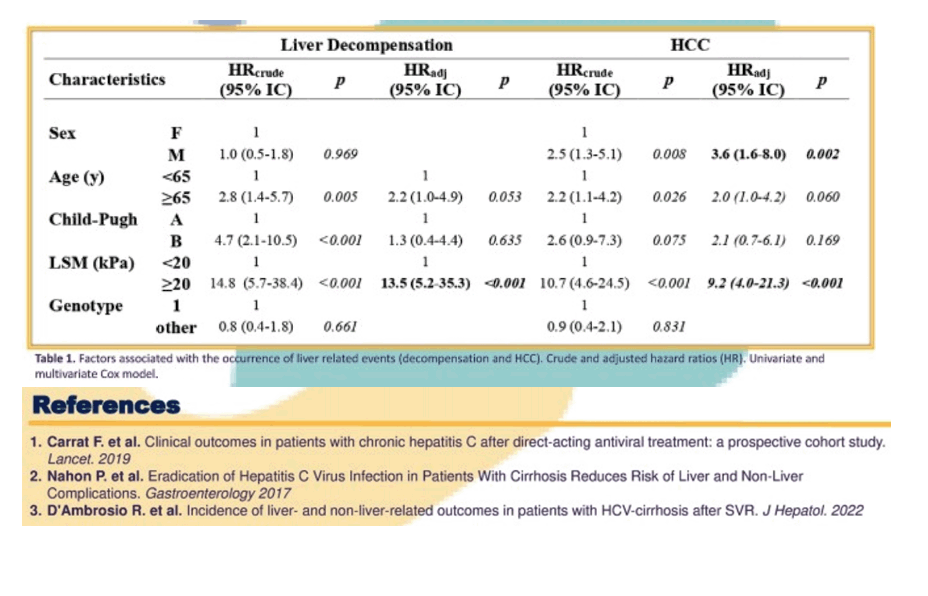 |
 |
 |
| |
Prediction of outcomes in patients with HCV compensated liver cirrhosis after SVR: results from 5-years of follow-up
|
| |
| |
EASL 2024 June 5-8 Milan Italy

Filomena Morisco1, Alessandro Federico2, Massimo Marignani3, Flavia L Lombardo4, Valentina Cossiga1, Luisa Ranieri1, Mario Romeo2, Marina Cipullo2, Paola Begini3, Federico Gioli3, Tommaso Stroffolini5
1Department of Clinical Medicine and Surgery, Departmental Program "Diseases of the liver and biliary system", University of Naples "Federico II", Naples, Italy, Naples, Italy, 2Hepato-Gastroenterology Unit, University of Campania Luigi Vanvitelli, Naples, Italy, Naples, Italy, 3Department of Digestive and Liver Disease, S. Andrea University Hospital, Rome, Italy, Rome, Italy, 4National Center for Disease Prevention and Health Promotion, Italian National Institute of Health, 00161 Rome, Italy, Rome, Italy, 5Department of Tropical and Infectious Diseases, Policlinico Umberto I, Rome, Italy, Rome, Italy
ABSTRACT
Background and Aims: In cirrhotic patients with HCV infection, the clinical challenge for physicians after achieving sustained virological response (SVR) is to accurately identify the subset of patients at-risk of developing liver-related event (LRE). The aims of our study are to: 1) evaluate incidence of and risk factors for LRE in a cohort of advanced chronic liver disease (ACLD) patients treated with DAA; 2) to evaluate the dynamic changes of liver stiffness in a subgroup of patients with favorable outcomes in 5 years of follow-up.
Method: A prospective multicenter study was conducted in 3 Italian centers. Consecutive patients with HCV-related ACLD starting DAA therapy between September 2014 and June 2018 were enrolled. Patients were followed for a mean period of 4.6 years after achieving SVR12 with regular biannual clinical, laboratoristic and instrumental follow-up. The at-risk period for each subject was defined by the time from the SVR12 until the end of follow-up or the onset of event. Cumulative and separate analysis were made according to the development of LRE.
Results: A total of 575 patients with ACLD achieving SVR12 were followed-up for 5 years. The male/female ratio was 1.1 and the mean age was 64.1±12 years. Nearly all subjects (94.4%) belonged to the Child- Pugh A stage. The mean liver stiffness (LSM) at baseline was 19.2 kPa. Overall, 98 (17%) patients developed any type of events and the mortality rate was of 8.8% (3% for liver-related cause). The HCC was the most frequent LRE (7.1%), followed by ascites (5%). The incidence rate was 1.6 (95%CI 1.2-2.2) per 100 person/year (p/y) for both HCC and liver decompensation. Among pre-treatment variables, LSM≥ 20 kPa (HR 13.5; 95% CI 5.2-35.3) was the only independent predictor of liver decompensation, while liver stiffness≥20 kPa (HR 9.2; 95% CI 4.0-21.3) and male sex (HR 3.6 95% CI 1.6-8.0) both were independent predictors of HCC development. Overall, 477 subjects did not experience LRE during the follow-up and, among these, paired LSM were available for 341 (71.5%) subjects. In this subgroup, the mean LSM, at SVR12, was 16.9±4.2 kPa and decreased to 13.0±4.0 kPa at the end of follow-up (T60). Overall, any LSM reduction was observed in 314 (92.1%) subjects with a mean reduction of 4.4 kPa. Among these 314 subjects, half of them showed a decrease of LSM ≥20%.
Conclusion: This study shows the relevance of baseline LSM as a tool to stratify patients at risk of developing LRE. The dynamic changes over time of LSM require a continuous long term monitoring of this parameter to update changes in fibrosis degree of subjects after SVR




|
| |
|
 |
 |
|
|